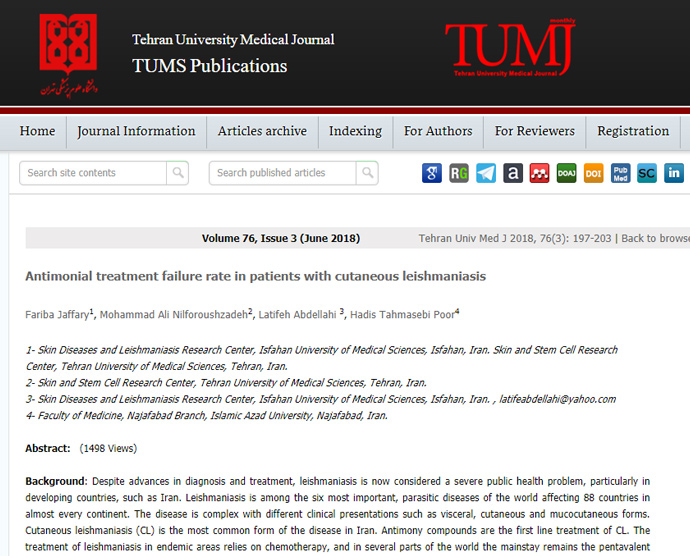- تاریخ انتشار: 2018
- لینک مرجع: http://tumj.tums.ac.ir/browse.php?a_code=A-10-3666-50&slc_lang=en&sid=1
- دانلود فایل مقاله: 1995
Antimonial treatment failure rate in patients with cutaneous leishmaniasis
Background: Despite advances in diagnosis and treatment, leishmaniasis is now considered a severe public health problem, particularly in developing countries, such as Iran. Leishmaniasis is among the six most important, parasitic diseases of the world affecting 88 countries in almost every continent. The disease is complex with different clinical presentations such as visceral, cutaneous and mucocutaneous forms. Cutaneous leishmaniasis (CL) is the most common form of the disease in Iran. Antimony compounds are the first line treatment of CL. The treatment of leishmaniasis in endemic areas relies on chemotherapy, and in several parts of the world the mainstay remains the pentavalent antimony (SbV)-containing drugs Pentostam (sodium stibogluconate) and Glucantime (meglumine). There is no comprehensive study on treatment failure rate of this compounds. This study was designed to evaluate treatment failure rate and possible involving factors of antimonial resistance in CL to facilitate and improve treatment strategies of this disease Methods: All patients with CL referred to Skin Disease and Leishmaniasis Research Center (SDLRC), from October 2011 to October 2013, treated with antimony compounds were assessed in this study. Patient characteristics (gender, age and place of residence), number, type and location of the lesions, comorbidities and type of treatment were recorded and analyzed
